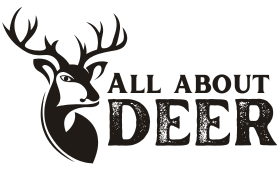The Dwarf Brocket is a deer species that may be small in size but is big on fascination. These remarkable creatures have a charm of their own and hold several interesting secrets waiting to be discovered. Join us on a journey to unveil the captivating world of the Dwarf Brocket.
Table of Contents
Species Data
- Class: Mammalia
- Order: Artiodactyla
- Family: Cervidae
- Scientific Name: Mazama chunyi
- Life Span: 8-12 years
- Height: 35-45 cm (14-18 inches)
- Weight: 20-30 pounds (9-14 kilograms)
Description
The Dwarf Brocket, scientifically known as Mazama chunyi, is a petite member of the deer family. Despite their small size, they possess an elegance that sets them apart. These deer have reddish-brown fur and short, unbranched antlers in males.
Appearance
Dwarf Brockets are known for their diminutive stature and graceful build. Their reddish-brown coat and slender legs make them a sight to behold in their natural habitat.
Behavior
These deer are primarily solitary creatures, often found alone or in pairs. They are known for their agility and swift movements, which help them navigate the dense undergrowth of their forested habitats.
Habitat
Dwarf Brockets prefer dense tropical forests and wooded areas. They are mainly found in Central and South America, where they can find the cover they need to stay hidden from predators.
Diet and Nutrition
Their diet consists of various plants, leaves, and fruits found in their forested habitats. They are herbivores, and their feeding habits contribute to the dispersal of seeds in their ecosystems.
Mating Habits
Dwarf Brockets do not have a specific mating season and can reproduce year-round. Female Dwarf Brockets give birth to a single fawn after a gestation period of approximately 6 months.
Mating Behavior
- Reproduction Season: Year-round
- Pregnancy Duration: Approximately 6 months
- Baby Carrying: Female Dwarf Brockets care for their fawns
- Independent Age: Fawns become independent at around 6-8 months
- Female Name: Doe
- Male Name: Buck
- Baby Name: Fawn
5 Fun Facts for Kids
- Dwarf Brockets are one of the smallest deer species in the world.
- Their small size and agile movements make them excellent at evading predators.
- These deer are primarily active during dawn and dusk, a behavior known as crepuscular.
- Dwarf Brockets play a crucial role in maintaining the health of their forest ecosystems through seed dispersal.
- Despite their small stature, they have a big impact on their habitat's biodiversity.

